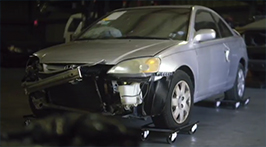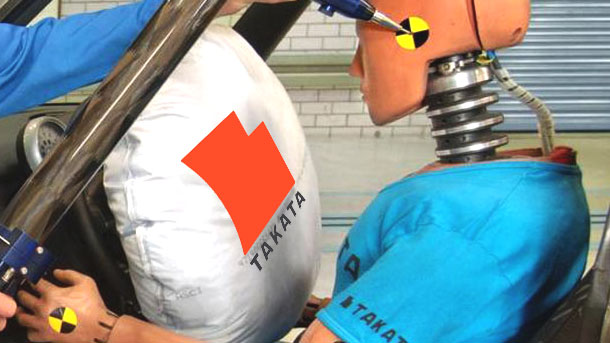Takata Allegedly Failed to Report 2003 Airbag Rupture in Switzerland
Vehicle Safety: Takata Airbags & Seatbelts
The Takata airbag inflator defect has become the subject of the largest automotive recall in US history. As explained in greater detail in this article, the airbag inflator defect was kept hidden from the public for years, allegedly due to secret settlements and the failure to report Takata airbag ruptures. It is then sadly unsurprising that recent reports suggest that Takata may have failed to disclose yet another rupture. According to recently released company documents, the accident in question occurred in 2003 in Switzerland and backs up claims by The New York Times and The Wall Street Journal that Takata knew about their faulty airbags since 2004, or even as early as 2000. This new account is of additional interest to investigators because Takata never informed authorities, which is against the law.
A string of faulty, life threatening airbags in more than twenty brands of cars, from Honda and Mazda, to Ford and Chrysler, to BMW, Mercedes, and Ferrari; all made by Takata, have been linked to the deaths of over a dozen people and many more injuries. Despite this knowledge Takata, still under the investigation of the Department of Justice, reportedly took thirteen years to disclose this incident from 2003. And it was not until U.S. authorities pressed the Japanese organization for details into the biggest auto recall in history that the facts came to light. Over 100 million cars have been recalled, 70 million in the U.S. alone, but every day that number continues to rise as do the deaths and injuries caused by bad airbags still on the road.
Takata Has Traveled This Road Before
This is not Takata’s first major recall. The 83-year-old company, that first produced life lines for parachutes, and switched to seatbelts in the 1950s, had their first foray into recall litigation in 1995. More than 8.4 million vehicles were recalled because of Takata’s defective seatbelts, which were releasing during impact because of a flawed plastic component. More than ten automobile manufacturers were affected. Both Takata and Honda paid fines to U.S. authorities for allegedly not cooperating with their investigation.
Takata entered the airbag market in 1988. Complaints of unintended ruptures have been tracked to documents that date back to 2000. Yet, Takata did not admit fault until recently, and they did not publicly apologize for the loss of life until the summer of 2015. That November, Takata agreed to pay the National Highway Traffic and Safety Administration (NHTSA) $70 million for not reporting their airbags were malfunctioning in the first place. Takata could now be on the hook for another $130 million, stipulated in their agreement if additional wrongdoing, like concealing the incident in Switzerland, is found by NHTSA. Takata has suffered hundreds of millions of dollars in additional losses since the start of the recalls, but the supplier still remains one of the largest automotive parts companies in the world.
Approximately 33,000 tire-related crashes occur each and every year, resulting in about...
The Ford C-Max Energi Electric car is being blamed for starting more...
“The findings in this analysis conducted for The Safety Institute are disturbing,...

